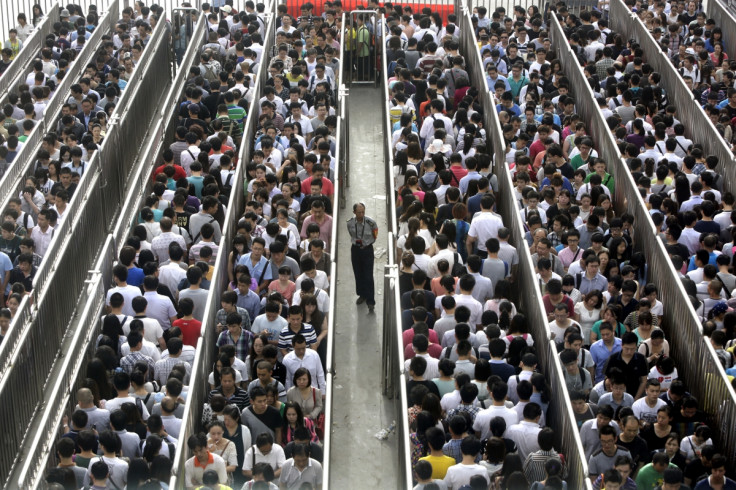World Population Day 2014: History, Facts and Risks of Overpopulation

Today marks World Population Day, an annual event observed on 11 July to raise awareness of global population issues.
Established by the Governing Council of the United Nations Development Programme in 1989, it was inspired by the interest in Five Billion Day on 11 July 1987 – approximately the date when the world's population reached five billion.
This year, the theme is "Investing in Young People."
What is the history behind the day?
As the world population edged to 7 billion in 2011 – up from 2.5 billion in 1950 – it has had profound implications for development, with effects on sustainability, urbanisation, access to health services and youth empowerment.
In 1989, the UN recommended that, to focus attention on the urgency and importance of population issues in the context of overall development plans and programmes and the need to find solutions for these issues, 11 July should be observed by the worldwide as World Population Day.
Today, around 1.8 billion young people are building the foundation of the world's future. However, many young continue to grapple with poverty, inequality and human rights violations that prevent them from reaching their personal and collective potential.
Facts about the global population
- As of 1 January 2014, the world's population was estimated to be 7,137,661,030, and increases by 2.3 people every second.
- The total number of people who have ever lived has been estimated by the Population Bureau to be around 108 billion.
- The world population is estimated to have reached one billion in 1804, with two, three and four billion in 1927, 1960 and 1974 respectively.
- These figures mean that about one fifteenth of all the people who have ever lived are alive today.
- Vatican City (800) and Nauru (9,378) are the states with the lowest populations.
- 30% of the world's population generally eat with chopsticks.
- China, India, USA, Indonesia, Pakistan and Brazil account for half the world's people. More than one in three people are Chinese or Indian.

What are the risks of overpopulation?
Food: Every day, 25,000 people die of malnutrition and hunger-related diseases, of which around 18,000 are under the age of five. Food production and distribution is stretched as the population increases to an unsustainable level.
Water shortages: One billion people across the globe lack access to sufficient water for consumption, sanitation and agriculture, as aquifers are depleted faster than they can be replenished and glaciers melt.
Oil and gas: There is a finite amount of fossil fuels and it is being used up at an incredible rate. The concept "Peak Oil" means that in the future, perhaps between 2015 and 2020, world oil production will max out and then start to decline.
Air quality: Childhood asthma rates have risen in the past two decades, as the population grows and the number of factories and cars increase. Those in undeveloped countries are also at risks, where people depend on burning wood and dung for cooking and heat.
Ozone Layer: Chemicals from human industries, such as chlorofluorocarbons (CFCs), destroy ozone. Some of the most dangerous CFCs have been banned in many countries, but their long-lasting nature means they continue to deplete the ozone layer. Currently, the layer is being destroyed at a rate of about 4% per decade.
Overcrowding: Tightly-packed housing or the sharing of a home between too many people can lead to problems with hygiene, violence, congestion, unemployment, air pollution, social problems and tension. There is an increased risk of the spread of infectious diseases.
Conflicts and Wars: Some of the most brutal and persistent conflicts and wars of the past decades have been driven by overpopulation and disputes over resources. The 1994 Rwandan genocide, the mass slaughter of Tutsi and moderate Hutu by members of the Hutu majority, was partly influenced by environmental factors to do with overpopulation - such as land pressure and unsustainable agricultural practices.
© Copyright IBTimes 2025. All rights reserved.




















